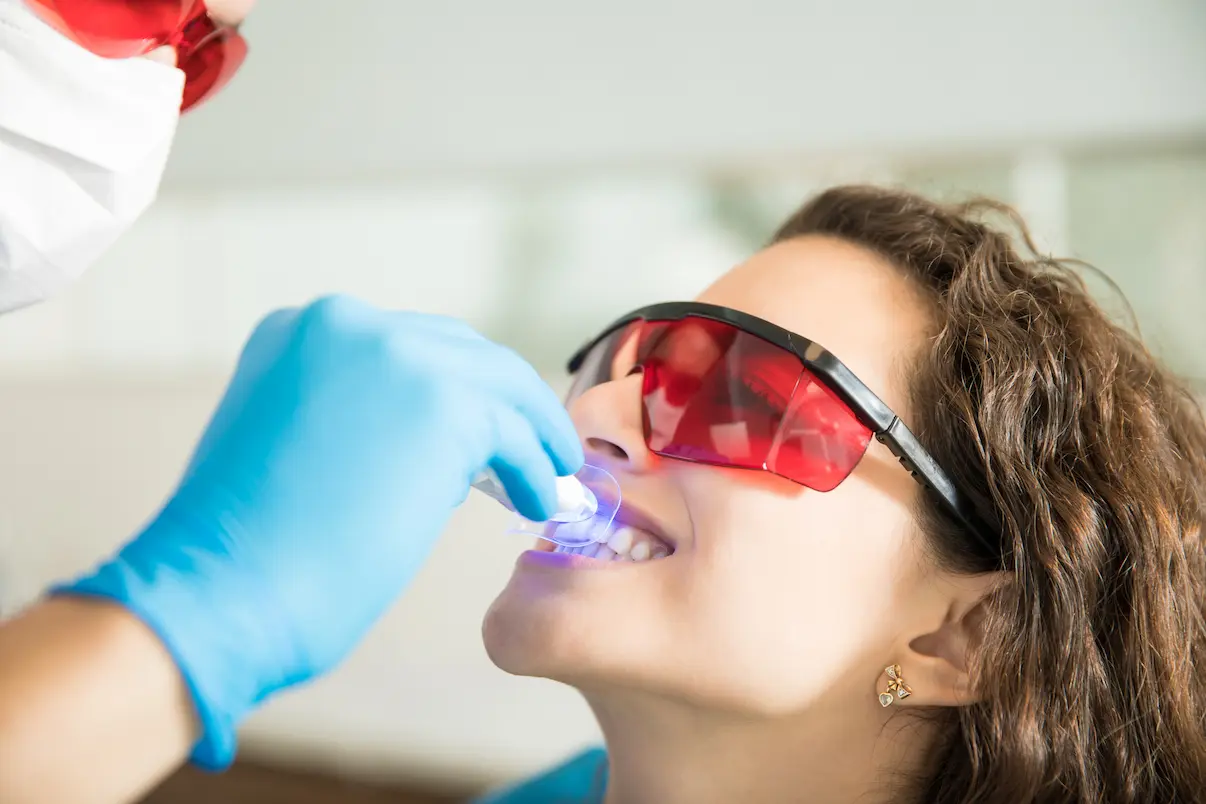Is UV whitening safe ?
Dr.Arab

Everyone deserves to have a beautiful, confident and healthy smile, so it’s no wonder that there are so many at-home products on the market to help you combat yellow or stained teeth and achieve a brilliant sparkle. But there’s one tooth whitening product that has gained attention in the past decade among celebrities and social media influencers that’s a bit more high-tech and expensive:
an at-home blue light or UV teeth whitening kit. Here are a few facts on the safety and effectiveness of these types of products, so you can understand how they work before considering them as an option for a whiter smile.
How does it work ?
These kits are similar to a common in-practice teeth whitening treatment, where a dental professional applies a peroxide-based whitening gel to your teeth and places a blue UV light over them. Together, the gel and light are thought to create a system that can expedite the teeth whitening process. That said, experts don't all agree on the effectiveness of these light-activated in-practice treatments, with researchers divided on the topic, according to a paper published in Dental Update.
An at-home kit works via the same principle and typically instructs you to apply a whitening gel to your teeth with a pen and then use a portable LED light over your teeth for a few minutes over a period of days. These kits often come with a higher price tag than other at-home whitening solutions, like whitening toothpaste or strips.
Safety of UV teeth whitening kits
You might be wondering, is UV teeth whitening safe? While the NHS does mention that in-practice light-activated treatments are an option you could consider for teeth whitening, it does not mention at-home UV light kits. It does however caution against the use of over-the-counter products. Dental Update notes that tooth sensitivity may be associated with bleaching when done at the dental practice.
Another critical safety consideration is the lack of safety data for at-home light-activated teeth whitening kits. As mentioned by DentiWiki, the types of light used in these products are as yet not well researched and there are signs that LED light may cause damage to oral tissue. The article concludes that it is safest to choose kits without LED lights when choosing a whitening product. Furthermore, according to the Oral Health Foundation, regulations on these kits vary from country to country. For instance, kits in Europe cannot legally contain more than 0.1% peroxide, whereas other countries allow for stronger amounts. Plus, some kits sold over the internet may contain extra ingredients that could potentially be harmful.
So, to answer the original question about the safety of UV teeth whitening, it’s unclear. Therefore, you should avoid using UV light kits at home, as the research isn’t definitive enough to say that it’s safe. Plus, the NHS cautions against the use of OTC kits of any kind.
Another potential issue in using UV teeth whitening is that there can be extreme user error, resulting in damage and even burns. The ratio of gel to UV exposure varies from kit to kit, and without the consultation of a dentist, you may not know your threshold for sensitivity. What's more, applying too much gel at one time can result in the gel conducting too much of the heat from the UV light, causing gum burns.
What if I injured myself with an at-home UV teeth whitening kit?
If you’ve experienced any injury from a UV teeth whitening kit, don’t panic – your oral health care provider will know what to do. If you’re injured, contact your oral health care provider immediately, and have the kit on hand to provide any information. From there, they will be able to help determine the best treatment.
Luckily, there are plenty of other safe and effective whitening methods available – and they don’t break the bank either!
UV teeth whitening alternatives
If you want to whiten at home, you’ve got options. One is to choose a toothpaste that contains a whitening ingredient, like hydrogen peroxide. You can use a whitening toothpaste every day for continuous whitening that becomes part of your oral care routine – no extra steps required. Whitening strips and pens are other options, though you should consult with your dentist to ensure that this is the safest method for your needs. While these methods won’t be as quick as an in-practice treatment, you can take comfort in knowing that they’re safe. But before you go ahead and choose an at-home whitening option, talk to your oral care provider first, and together you can determine the best (and safest) method.
Tags
Comments
Please let us know what you think!